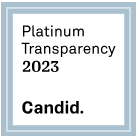#MythbusterMonday - April 2018
/We begin each week using our online voice to debunk myths about hunger. Our #MythbusterMonday social media series dispels misinformation and stigma commonly associated with food assistance programs like CalFresh/SNAP and youth meals and the people who rely on them to help put food on the table.
What hunger myths have you heard? Join us in sharing the truth about hunger each Monday using the hashtag #MythbusterMonday.
In April, we busted the following hunger myths:
April 2
The first Monday of the month we take a look back at the myths busted the previous month. Check out the myths we busted in March. Click here.
April 9
#MythbusterMonday "People who receive public benefits are 'takers' rather than 'makers,' " False! This is untrue for the vast majority of working-age SNAP recipients. SNAP benefits, formerly known as food stamps, currently serve about 42 million Americans. At least one adult in more than half of SNAP-recipient households is working. The average SNAP subsidy is $125 per month, or $1.40 per meal – hardly enough to justify quitting a job. Click here to read more from the Chicago Tribune.
April 16
#MythbusterMonday "CalFresh/SNAP is a drain on tax-payers." False! CalFresh/SNAP is good for the economy. Every $1 in SNAP benefits generates $1.73 in economic activity. Click on the here to learn more and read other myths about CalFresh/SNAP.
April 23
#MythbusterMonday "People who get CalFresh/SNAP benefits aren’t employed and have no incentive to look for work." False! CalFresh/SNAP helps people stay afloat in between jobs. Nationally, more than 80 percent of SNAP participants reported working in the year before or after receiving SNAP. In San Diego County, the current average CalFresh benefit per person is $4.10/day, hardly an incentive not to work. Take the #CalFreshChallengefrom May 7 - 11 to experience what its like to live on an extremely limited food budget. Click here to learn more and register.








